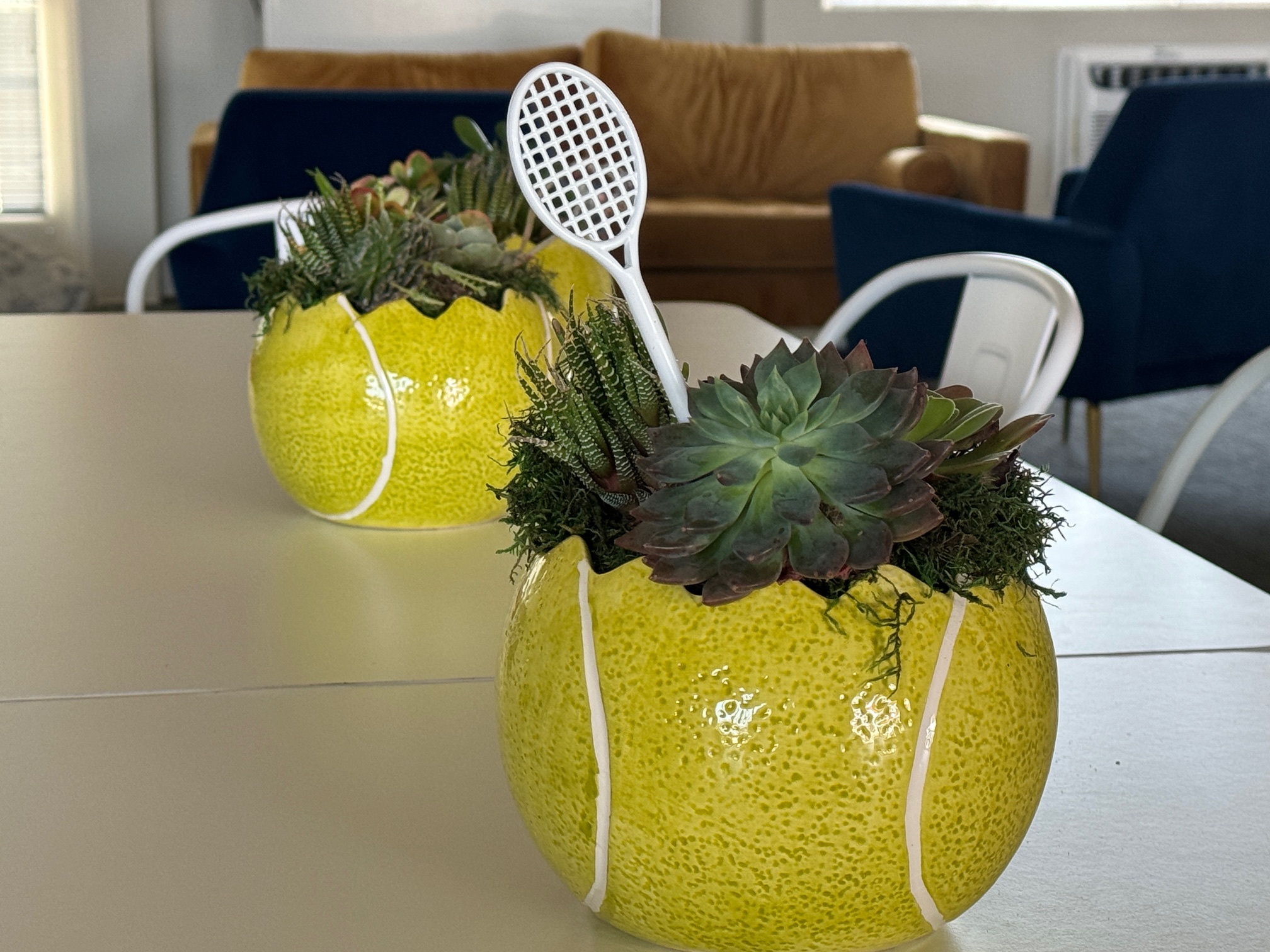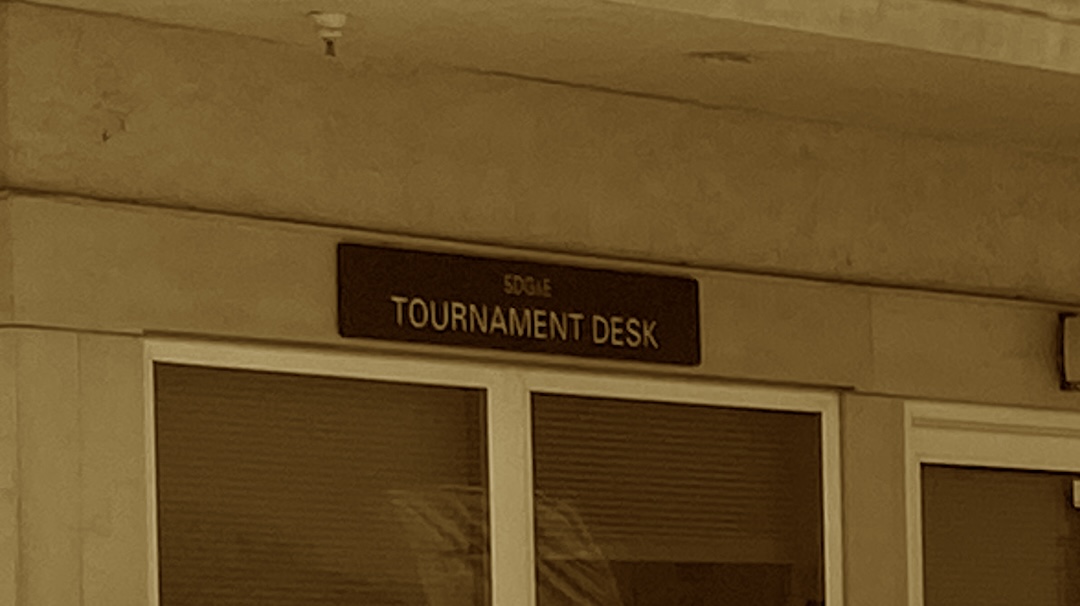Last Wednesday, we explored a new ITF Case Decision regarding permanent fixtures attached to the net post. I springboarded off that topic to share how much I dislike one particular form of score-keeping device. As it turns out, there are a lot of players that share my perspective. However, I also received some pushback, which justified some additional rants on this general topic.
In sanctioned matches with a roving umpire, the officials are trained to be adamant that players use whatever scorekeeping device is on the court. That is because it is a physical manifestation of the agreement of the game count between the players. It can be used to prevent and, in some cases, resolve scoring disputes.
It irks me when the scoreboard is mounted on the opposite side of the net from the bench area. In those cases, updating the score requires one of the players to walk to the other side of the court to make the update at each changeover. That might not seem like a big deal, but the player who does that sacrifices some of their changeover time as well as the effort of those extra steps. That can add up over the course of a match. Why do facilities do that to players?
In my experience, checking the scoreboard when calling the game count is a frequently overlooked best practice in tennis. In fact, not calling the score at all seems to be a current chronic issue in the sport. Calling and reconciling the score with the scoreboard can clear up misperceptions about who is “Home” and who is “Visitor” on static scoreboards. It can also reveal slight disagreements in the game count before it becomes a significant issue.
Last week’s scorn of the PVC pipe scoreboard method was met with a few comments that the device isn’t truly that bad. Additionally, some assert that it is the “best” device for public facilities. I disagree. The best scoreboard is a flat wooden panel with integrated disks that slide up and down grooves. Those disks are moved to spots that reflect the current score. It has none of the drawbacks of the PVC pipe system.

To head off the inevitable observation that the flat wooden panel still has the “Home and Visitor” issue, please allow me to introduce Exhibit “A.” (This is another of those cases where it is useful to have a browser or email client that doesn’t block images.) The wooden flat panel lifts off the peg and can be turned so the score for each player is on their side of the net.

I prefer the hanging flip cards scoreboard form factor for tournament play. Like the flat wooden panel featured above, those devices are designed to rotate at every changeover. One downside of the flip card type is that the wind in Texas can wreak havoc on these devices. They also have many moving parts that can break or get lost. The durability issues usually mean that many facilities store the scoreboards when not in use, so they aren’t always out for casual play. Oh well, just call the score.

Since my post last week, one reader pointed out that the PVC tube scoreboard isn’t accessible to many wheelchair players who cannot reach the top spots on the board. That is the type of perspective that might actually get the devices banned someday.
A ball striking any of these scoreboards would still lose the point via the permanent fixture rule. However, it is significantly less likely on the flip card version or the smaller profile flat wooden panel. The PVC pipe remains the most obtrusive scorekeeping device.
One commenter asked how often balls really strike the scoreboard anyway. For most skilled players, that isn’t a good metric because they will alter their shots to avoid the obstruction. Even so, in a sport where the difference in a match is usually only a handful of points, even hitting the scoreboard once can make a big difference.
This is one of the reasons why writing this blog has been such a rewarding journey of discovery for me. Up until a month ago, I didn’t realize how strongly my preferences ran in this seemingly inconsequential area.




I want the record to reflect that I did not do this. https://fiendatcourt.com/wp-content/uploads/2024/02/73042440094__D81379A4-7A99-4A08-8EA2-55BE9EE53100-rotated.jpg
I do like the flat wooden panel and goes to 10, but it doesn’t actually seem to improve the worst part about PVC tubing as a scorecard much (in the flight path of shots), and might actually be worse. PVC tubing is 42″ tall, and not sure on width (maybe 1-2″ at most wide). Flat wooden panels are 30′ tall and 8″ wide. Regardless, both are quite tall and will get in the way much more than flip scorecards. Ideally, the best solution is a scorecard not positioned on the net and out of the way of play, but I’m not sure what that looks like, maybe attach something on the back wall/fence? But, having a scorecard present helps quite a bit keeping better track of the score and resolving disputes easier.
I watch and play a lot of matches. I can only speak from personal experience, but seeing someone hit a scorecard is extremely rare and can’t remember the last time I saw this. Playing thousands of matches in my life, granted often without scorecards, I can’t remember more than 1-3x ever hitting a scorecard. I can’t remember ever altering my shot because of a scorecard either. My shots those times were unlikely going into the court, too. I always play on a doubles net. I suspect this is similar with almost all rec players, too. This means the scorecards are well outside the singles sideline and much rarer for a player hitting them in singles than doubles. So, they’re basically only an issue for doubles. But even doubles, they are outside the doubles sideline still and a player would have to be pushed very wide for them to even potentially be in the way of a shot.
Just looking online briefly and I’m sure there’s different costs for all kinds of scorecards. Flip cards were $35, PVC tubing was $59, flat wooden panel was $247. Clubs/facilities might get discounts if they buy enough, but the flat wooden panels are much pricier. It’s understandable if we don’t see these as often then.